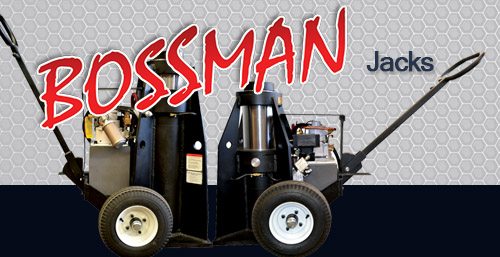Hydraulic jacks are essential for lifting heavy loads, making them indispensable for various industries such as automotive, construction, and manufacturing. They use the power of hydraulics to produce a large amount of force to lift, lower, or move large and heavy objects. In this article, we will delve into the inner workings of hydraulic jacks to understand the principles behind their functioning and explore some of their common uses.
The Principle of Hydraulics
Hydraulic systems operate based on Pascal’s Law, which states that when pressure is applied to a confined fluid, the pressure change occurs equally throughout the fluid. This principle is crucial to the operation of hydraulic jacks as it allows them to generate a significant amount of force without requiring a large input force.
The Components of a Hydraulic Jack
A typical hydraulic jack consists of the following components:
- Cylinder
The cylinder is the main body of the jack, housing the hydraulic fluid and providing a space for the piston to move up and down.
- Piston
The piston is a movable component that slides within the cylinder, creating a pressure difference in the hydraulic fluid as it moves.
- Pump
The pump transfers the hydraulic fluid from the reservoir to the cylinder, creating pressure and causing the piston to move.
- Reservoir
The reservoir is a container holding the hydraulic fluid when not in use.
- Valves
Valves are used to control the flow of hydraulic fluid between the reservoir, pump, and cylinder.
How a Hydraulic Jack Works
The operation of a hydraulic jack involves the following steps:
- When the pump handle is pushed down, the pump plunger moves into the pump cylinder, forcing hydraulic fluid through a one-way valve into the main cylinder.
- As the fluid is forced into the main cylinder, it creates pressure in the confined space, pushing the piston upwards.
- The upward movement of the piston causes the load-bearing surface of the jack to rise, lifting the load.
- When the pump handle is released, the one-way valve closes, preventing the hydraulic fluid from flowing back into the pump cylinder.
- To lower the load, a release valve is opened, allowing the hydraulic fluid to flow back into the reservoir, reducing the pressure in the main cylinder and causing the piston to descend.
Uses of Hydraulic Jacks
Hydraulic jacks are used in various applications due to their versatility and ability to generate a large amount of force. Some of the common uses include:
- Vehicle Repair and Maintenance
Hydraulic jacks are widely used in automotive repair shops to lift vehicles, allowing mechanics to access and work on the undercarriage.
- Construction and Infrastructure
Hydraulic jacks are used in construction projects to lift and position heavy equipment, materials, and structures. They are also used for bridge maintenance, structural repairs, and foundation leveling.
- Manufacturing and Industrial
In manufacturing plants and industrial settings, hydraulic jacks are used for lifting and moving heavy machinery and equipment during installation, maintenance, and repairs.
- Mining and Excavation
Hydraulic jacks are used in mining operations to lift and move heavy equipment and in tunneling projects to support tunnel walls and ceilings.
Understanding the mechanism behind hydraulic jacks allows us to appreciate the power and versatility of these indispensable tools. By harnessing the principles of hydraulics, they offer an efficient and reliable solution for lifting and moving heavy loads across various industries. Whether it’s a car needing repair, a construction project, or a mining operation, hydraulic jacks play a crucial role in making our work more manageable and efficient.
If you are looking for a 100-ton hydraulic jack, look no further than Duff-Norton Air Motor Jacks. Our product line includes heavy-duty lifting devices with capacities up to 150 tons, designed for use in a variety of industries, including railroad, mining, construction, and shipbuilding. Get in touch with us today!

